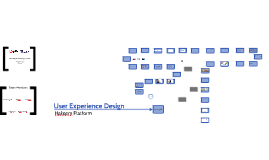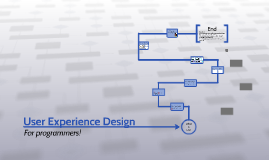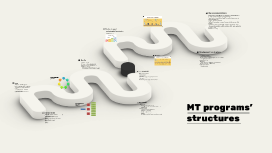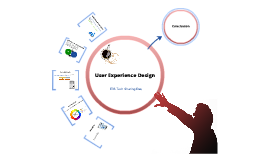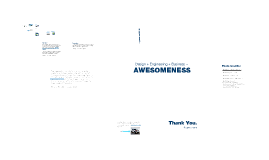User Experience Design
Transcript: User Experience Design Exploring Key Principles and Trends Inclusive Design Inclusive design aims to create products accessible to a diverse range of users, considering disabilities, age, and cultural differences. This approach not only broadens user reach but also enhances user experience by allowing everyone to engage with the product effectively. Use of AI in UX Artificial intelligence is transforming UX design by enabling personalization and predictive analytics. AI tools analyze user data to tailor experiences based on behavior patterns, significantly enhancing user interactions and satisfaction. Conversational UX Conversational UX encompasses design elements that facilitate interaction through natural language dialogue. This trend is driven by the rise of chatbots and voice assistants, which allow users to engage more intuitively with technology, improving overall user satisfaction. Trends in UX Design The landscape of UX design is rapidly evolving with new trends that enhance user engagement and satisfaction. Understanding these trends is vital for creating effective and user-friendly designs. Mobile-First Design Mobile-first design prioritizes the mobile user experience before scaling up for larger screens. With over 50% of global web traffic coming from mobile devices, creating designs that work seamlessly on smartphones is essential for accessibility and engagement. Visual Design Visual design focuses on aesthetics and emotional connection, utilizing color, typography, and imagery to enhance user engagement. Effective visual design complements usability, guiding users through the interface seamlessly. Iterative Testing Iterative testing involves continuously evaluating design solutions through user testing and feedback. This process refines usability and ensures the product meets user needs, leading to better user satisfaction and product success. Wireframing and Prototyping Wireframing provides a skeletal framework of the design, illustrating the layout and functionality. Prototyping transforms these wireframes into interactive models, enabling real-time usability testing and feedback collection. UX Design Process Ideation and Concepts The UX design process involves systematic stages from ideation to iterative testing, ensuring user-centered solutions. Each phase is essential for delivering intuitive and engaging experiences, ultimately enhancing user satisfaction and product validity. Ideation is where creative ideas are born, focusing on identifying user needs and problems. Techniques like brainstorming, mind mapping, and user journey mapping help generate innovative concepts, driving effective design solutions. A/B Testing Introduction to UX Definition of User Experience A/B testing compares two versions of a webpage or app to determine which performs better. By analyzing user interactions and conversion rates for each version, designers can make data-driven decisions that optimize user engagement and satisfaction. User Experience (UX) encompasses all aspects of the user's interaction with a product or service. Understanding UX is essential for creating solutions that meet user needs, ensuring satisfaction and loyalty. Usability Testing User Experience refers to the overall experience a user has with a product, system, or service. It includes all interactions, perceptions, and emotions that result from the use of the product. Usability testing assesses how easily users can navigate and interact with a product. By observing users performing tasks, designers can identify pain points and enhance the user experience based on real feedback, ensuring the product meets user expectations. Accessibility in UX Consistency and Standards Consistency in UX design creates familiarity for users, allowing them to navigate applications more intuitively. Adhering to established standards helps maintain coherence across different platforms and enhances user experience. Importance of UX Design UX vs. Usability Accessibility in UX ensures that all users, including those with disabilities, can effectively interact with digital products. Implementing accessibility guidelines, such as WCAG, enhances usability and inclusivity in design. UX Research Methods Effective UX design is critical for user satisfaction and retention. A well-designed product can improve usability, increase accessibility, and enhance customer loyalty, ultimately leading to higher conversions. While UX encompasses the overall interaction with a product, usability focuses specifically on how easy and efficient it is to use. Both aspects are crucial for creating successful products that meet user needs effectively. Surveys and Questionnaires Feedback and Response Understanding the fundamental UX research methods is crucial for designing user-centered products. These methods provide valuable insights into user needs and preferences, ensuring that design decisions are grounded in real-world data. Providing timely and relevant feedback is crucial for







